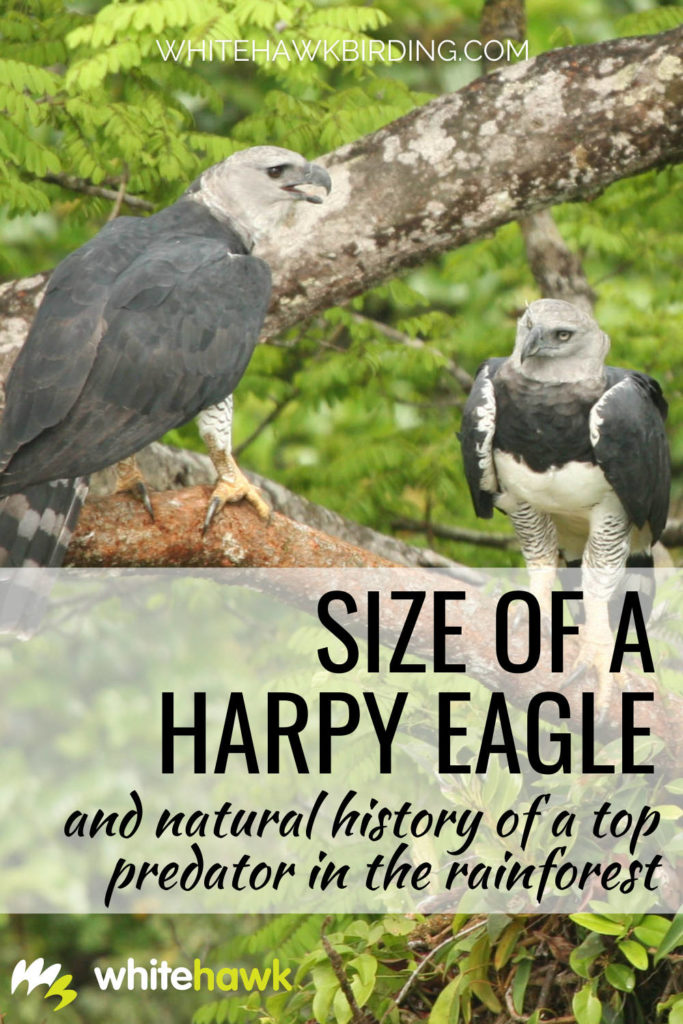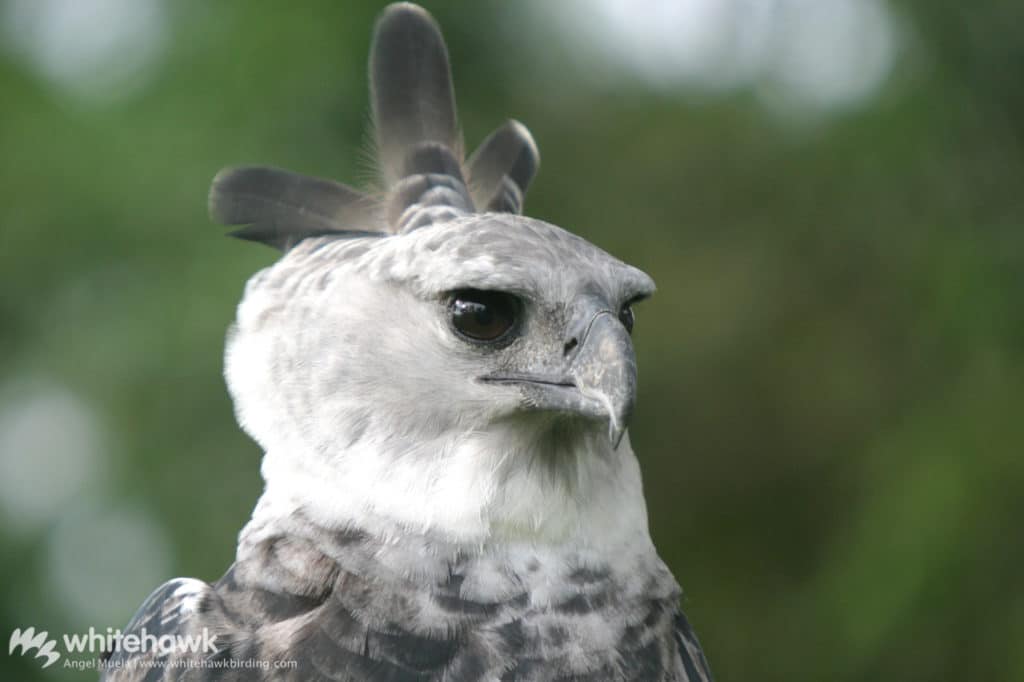
The Harpy Eagle (Harpia harpyja) is considered to be the most powerful eagle in the world. Its thick tarsi (legs), strong toes, and sharp talons make this species a formidable predator. Historically found in rainforest habitats from southern Mexico to northern Argentina, the Harpy Eagle feeds on a number of different prey items. It prefers medium-sized arboreal mammals, such as sloths and monkeys. Other animals that make up its diet include opossum, coatimundi, young javelina and deer, porcupines, foxes, toucans, and parrots, among many others. Needless to say, the sheer size of a Harpy Eagle is impressive to catch this array of prey.
The Harpy Eagle is a top predator in the rainforest habitat where it lives. This means it must hunt other animals for survival, but rarely falls prey to other animals (except humans) itself. As a top predator in the rainforest, the Harpy Eagle plays an important role. It helps stabilize prey populations by culling old and sick individuals. This helps prevent overpopulation, thus reducing disease, starvation, and, in some cases, conflicts with humans.
Unlike many birds of prey, Harpy Eagles can go quite a long time – over a week – without eating. They can go even longer without catching quarry. If they are able to hunt a good-sized prey item, they will feed on the same animal for several days.
Just How Big is a Harpy Eagle?
Though many people believe that the Harpy Eagle is the largest eagle in existence, when talking about a bird’s size, there are many things to take into account. It is also important to remember that scientists are unable to measure every individual and, as with most wildlife, there can be a great variation in individual size.
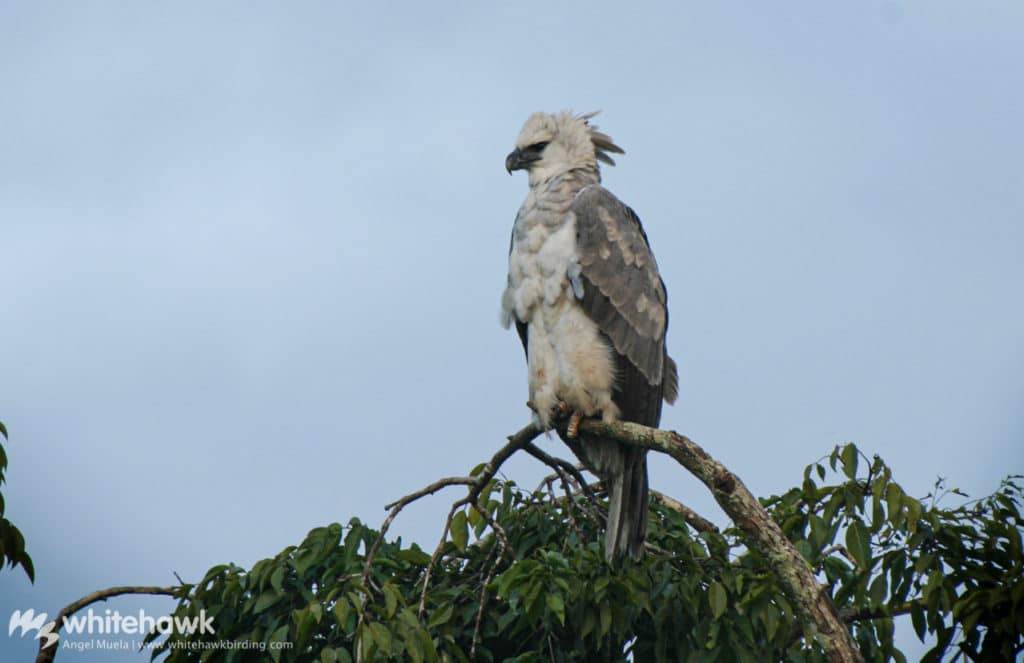
Even though the Harpy Eagle is identified as one of the most powerful raptors in the world, it might be surprising to learn that it is in a virtual tie height-wise, and it doesn’t come close to having the largest wingspan in the eagle world. The Harpy Eagle measures around 1 meter (3 ft) or a little taller, from the tip of its beak to the tip of its tail. The Philippine Eagle rivals the Harpy beak by a beak, so to speak. The average height for a female Philippine Eagle is just about 1 m as well. Bald and Golden Eagles both have longer wingspans than the Harpy Eagle. Their wingspans can measure up to 2.2 m (7.5 ft), while a Harpy Eagle’s is roughly 1.8 m (6 feet). Harpy Eagles do not soar and their relatively shorter wings help them maneuver more easily through the trees and vines prominent in their rainforest home.
When it comes to weight, Harpy Eagles are one of the bulkier eagle species around with males weighing about 5.9 kg on average while females weigh 7.4 kg on average. However, pound for pound they are rivaled by only the impressive Steller’s Sea Eagle, which also weighs in at between 5-9 kg (11-20 lbs.).
One size contest the Harpy Eagle might be able to win has to do with their feet! Like most raptor species, Harpy Eagles are equipped with impressively strong legs, feet and talons. Like most birds, Harpy Eagles feet have four toes. The talon on this hind toe is its largest and measures 7-10 cm (3-4 in.), the same size as a Grizzly Bear’s claws!
Identifying a Harpy Eagle
Like most birds of prey, the female Harpy Eagle is larger than the male. However, in regards to plumage coloration, males and females are identical. When a Harpy Eagle first hatches, it is covered in pure white down. It will grow quickly and, after about 4 months it will be fully feathered. Its face and belly will be white, and its back and upper breast a very light gray. Its wing and tail will be mottled gray and black. Over the subsequent five years Harpy Eagle plumage will continue to change, until it reaches adult plumage at 5 years of age.
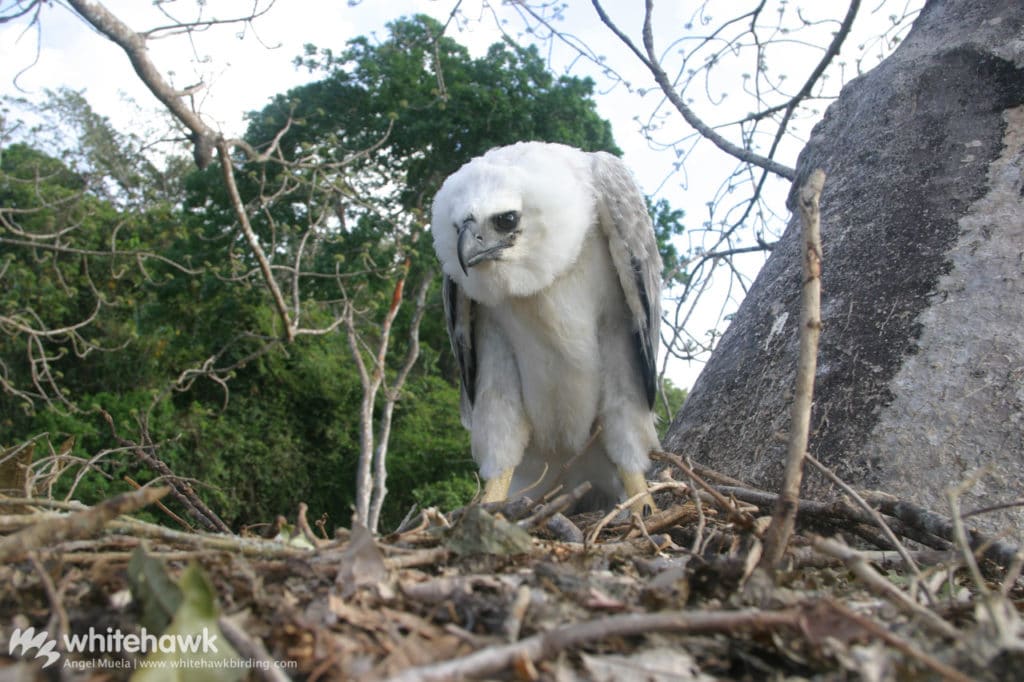
Adult Harpy Eagles have a gray head, black wings and back, a black breast band and a dark tail with white bands. Their faces are slate gray. Harpy Eagles are equipped with a facial disk. This is a ring of feathers around its face that they can raise and lower at will. When it is lifted, it helps triangulate sound to their ears, making it easier for them to pinpoint and hone in on prey. They also have a long crest which they can also lift and lower at will.
Though it is hard to mistake any other bird for a Harpy Eagle, there is one raptor that shares its habitat, overlaps slightly in size and has similar plumage patterns. That, of course, is the Crested Eagle. However, this eagle is much more slim overall, and its legs are notably much thinner. The Crested Eagle also has prominent barring across its breast and belly that the Harpy Eagle lacks.
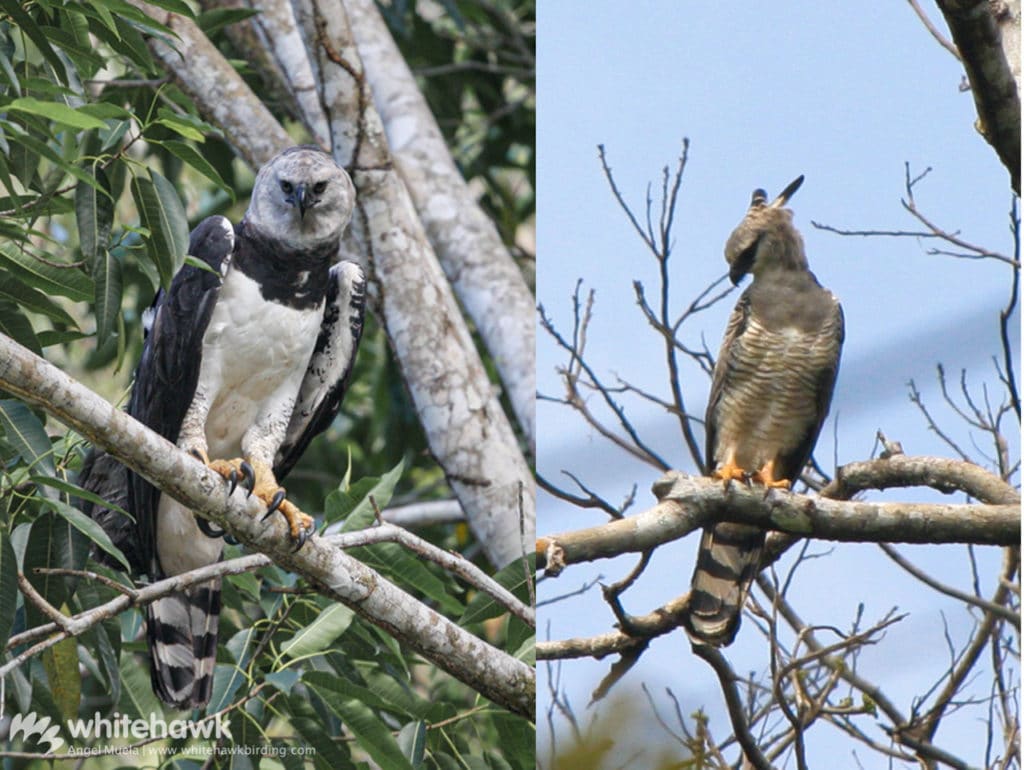
Lifespan and Nesting
The Harpy Eagle is a long-lived species. One female at the Summit Zoo in Panama lived for over 60 years. Researchers estimate that this species’ life span in the wild is less since they must contend with a number of threats including human persecution, starvation, and injury.
Harpy Eagles are believed to be monogamous and territorial. The pair will build their nest in the crotch of a large emergent tree high above the canopy. Nests can be quite large in diameter. The female eagle usually lays 1-2 eggs, though only one young hatches. Incubation lasts for around 55 days and the young eaglet will fledge between 5 and 6 months of age.
After leaving the nest, the young eagle will still be dependent on its parents, and remain in their territory for 1.5-2 years or longer. Thus, one Harpy Eagle pair usually only produces one young every 2-3 years. Once a young Harpy Eagle leaves its nest, life quickly becomes much more difficult and dangerous as it learns to navigate in an ever-changing world. Harpy Eagles reach sexual maturity when they are around 5 years old.
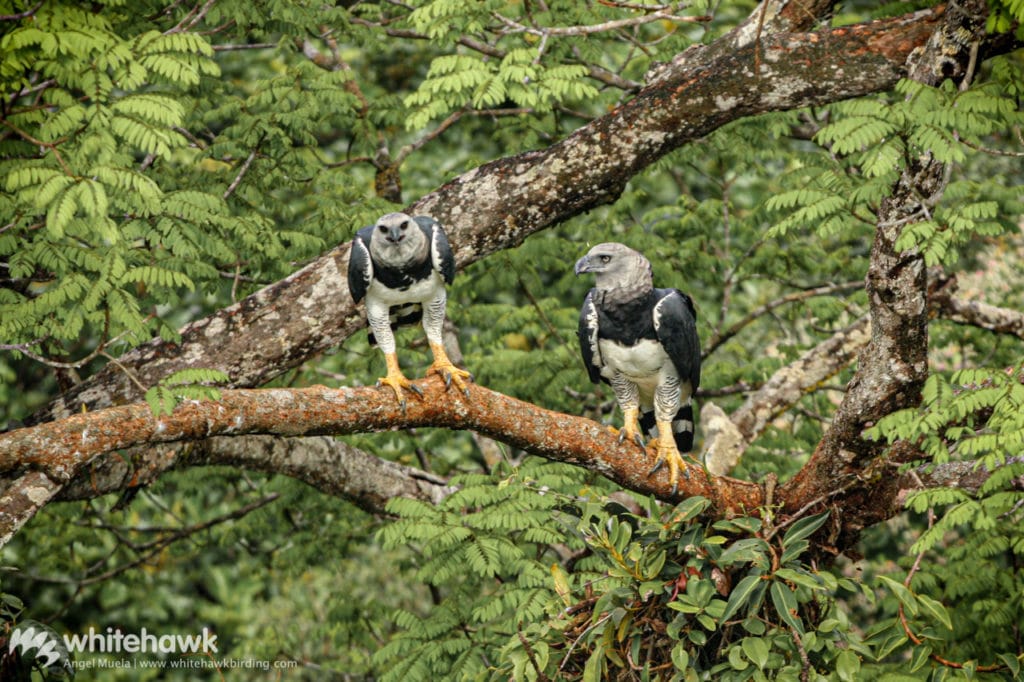
Harpy Eagles are curious birds. They also tend to be less afraid of humans than other birds of prey. This, coupled with their large size can make them relatively easy to observe once spotted, since they often hang around as interested in you as you are in them. While for birders this provides a wonderful opportunity to observe this eagle for a long time, it sadly, also puts this species in danger from poachers.
Harpy Eagle Conservation
Harpy Eagles face many threats throughout their range. Habitat loss and fragmentation, and human persecution are probably two of the most immediate challenges to this species’ survival. Research shows that Harpy Eagles can survive in slightly altered forests. However, they remain in danger when coming into contact with humans. Of course, extensive forest destruction also creates loss of important nest sites. It also can cause declines in populations of monkeys, sloths, toucans and other species that the Harpy Eagle relies on for survival.
The Peregrine Fund is a world renowned organization working to protect Harpy Eagles. In fact, their efforts in Darien, Panama represent the longest-running study (more than 20 years) on Harpy Eagles. They are also working to conserve these birds and their habitats. Monitoring, environmental education, community engagement, capacity building and forest conservation programs are part of their conservation strategy. The entire Whitehawk team has worked on this project at one point. Ask us more about our work with Harpy Eagles and the opportunity to see one in the wild.

